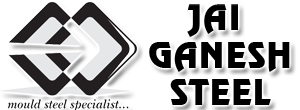Die Steel | Die Steel Composition | Die Steel Supplier | Die Steel D2
BEST SUPPLIERS IN DELHI, GURUGRAM, KUNDALI, MANESAR, FARIDABAD
What is Die steel?
Die steel is the best tooling steel.
It contains high carbon and high chromium (HCHCR) in its content.
Our clients can avail a diverse range of tooling steel rounds, squares & flats.
grade- D2 & D3 Steel, which is available in various specifications.
With the help of our vendors, we provide customized solution.
We meet the various requirements of clients within a committed time frame.
and with the customized size as per clients requirement.
Available shapes – Flat, square & Round bars.
High Carbon, High Chromium(HCHCR).
The high-carbon, high-chromium tool steels are the most highly alloyed steels.
There are five standard AISI (UNS) types of these steels:
- D2 (T30402).
- D3 (T30403).
- D4 (T30404).
- D5 (T30405) and.
- D7 (T30407).
Note:- D1 and D6 are no longer in common use.
D-type tool steels contain between 10% and 18% chromium.
These steels retain their hardness up to a temperature of 425 °C (797 °F).
What are the common uses of die steel?
Common applications for these grade of tool steel is as follows:-
- forging dies,
- die-casting die blocks.
- drawing dies.
Due to high chromium content, certain D-grade tool steel grades are often considered stainless or semi-stainless tool steels.
However their corrosion resistance was very limited due to the precipitation of major amount of chromium and carbon as carbides.
What are the properties of D2 die steel?
The properties of d2 steel is as follows:-
- D2 die steel is an air hardening, high-carbon, high-chromium tool steel.
- It has high wear and abrasion resistant properties.
- It is heat treatable and will offer a hardness in the range 55-62 HRC, and is machinable in the annealed condition.
- D2 steel shows little distortion on correct hardening.
- D2 steel’s high chromium content gives it mild corrosion resisting properties in the hardened condition.
What are the typical applications for D2 Die Steel?
The typical applications of d2 steel are as follows:-
- Stamping or Forming Dies.
- Punches.
- Forming Rolls.
- Knives, slitters, shear blades.
- Tools.
- Scrap choppers.
- Tyre shredders.
Typical chemical composition of AISI D2 Die Steel |
||||
|---|---|---|---|---|
|
C |
SI |
Cr |
Mo |
V |
| 1.50% | 0.30% | 12.00% | 0.80% | 0.90% |
The D2 die steel heat treatment includes following processes:-
(1) Forging:-
Heat slowly and uniformly to 700°C then more rapidly to 900/1040°C.
Do not continue to forge D2 below 925°C.
Reheat as often as necessary to maintain proper forging temperature.
After forging cool slowly.
This is not an annealing process.
After the forging is cold, it must be annealed as described below.
(2) Annealing:
Heat uniformly to 843/871°C, then slow furnace cool at a rate of not more than 10°C per hour.
After annealing D2 a maximum hardness of 240 Brinell may be achieved
(3) Hardening:
D2 tool steel is extremely sensitive to overheating during hardening – do not overheat.
Pre heat slowly to 750/780°C and soak.
Continue heating to the final hardening temperature of 1000/1030°C and allow the component to equalize.
Quench in oil or cool in air.
(3) Tempering:
Heat uniformly and thoroughly to the desired temperature and hold for 25 minutes per cm of thickness.
D2 can be double tempering at approximately 15°C below the first tempering, after intermediate cooling to room temperature.
Tempering D2 Steel |
||||||
|---|---|---|---|---|---|---|
| Tempering °C |
150 |
200 |
250 |
300 |
350 |
400 |
| HRC |
62/61 |
61/60 |
60/59 |
57/56 |
56/55 |
56/55 |
Where higher hardness (62-63 HRC) is required and superior toughness and wear resistance consider our D2 Supreme.
What are the properties of D3 die steel?
- D3 die steel, is an air hardening, high-carbon, high-chromium tool steel.
- It displays excellent abrasion/wear resistance and has good dimensional stability and high compressive strength.
- It is heat treatable and will offer a hardness in the range 58-64 HRC.
- Due to its abrasion resistance in the hardened condition, D3 machining should be limited to finished grinding.
What are the typical applications of D3 die steel?
The typical applications of d3 steel are as follows:-
- Blanking and forming dies.
- Forming rolls.
- Press tools.
- Punches.
- Bushes.
Typical chemical composition of AISI D3 Steel |
||||
|---|---|---|---|---|
|
C |
SI |
Cr |
Mn |
Ni |
| 2.10% | 0.30% | 11.50% | 0.40% | 0.31% |
The D3 Heat Treatment process include the following steps:-
(1) Annealing:
Heat uniformly to 850-870°C, soak thoroughly, then slow furnace cool at a rate of not more than 25°C per hour to 650°C.
The parts may then be air cooled. This should result in a maximum hardness of brinell 248.
(2) Hardening:
D3 tool steel is extremely sensitive to overheating during hardening – do not overheat.
Pre heat slowly to 800-850°C, the raise rapidly to 950-970°C and soak until completely equalised. Quench in oil.
(3) Stress Relieving:
Heat to 650-700ºC. Soak for 2-4 hours then furnace cool.
(4) Tempering:
Heat uniformly and thoroughly to the desired temperature and hold for 25 minutes per cm of thickness.
D3 can be double tempered after intermediate cooling to room temperature.
Tempering D3 Steel |
||||||
|---|---|---|---|---|---|---|
| Tempering °C |
150 |
200 |
250 |
300 |
350 |
400 |
| HRC |
64/63 |
63/61 |
62/60 |
61/60 |
60/59 |
59/58 |
FOR DIE STEEL, CONTACT US :-
| Jaiganeshsteel |
|---|
| +91-8802688030 |
| 011-45872912 |



